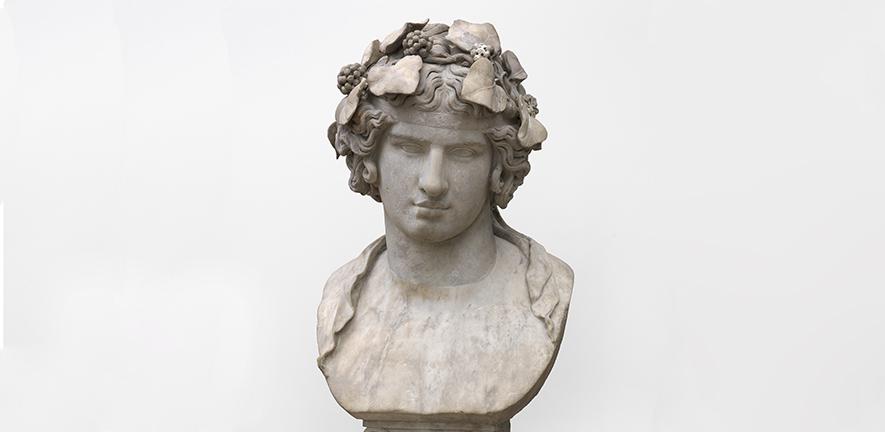Look, think, do: Bust of Antinous
Description of this object or artwork
This bust of Antinous features in our in-gallery LGBTQ+ Bridging Binaries tours. This Look Think Do celebrates Cambridge Pride.
The Emperor Hadrian, who ruled the Roman Empire between 117 - 138 AD, loved Antinous, a man from Bithynia (modern-day Turkey). When Antinous sadly died in Egypt in 130 AD under mysterious circumstances, Hadrian wanted to celebrate their love and announced that Antinous was to become a god. This was highly unusual as it was the custom only to make emperors and their family members into gods after they had died.
Hadrian didn't stop there: he named a city in Egypt after Antinous and had his face put onto coins. Sculptures of Antinous were put up across the Roman Empire, so many in fact that more sculptures have been found of him by archaeologists than any other person from the Ancient World, except for Emperor Hadrian and Emperor Augustus. Sculptures of Antinous tend to celebrate his youth and his beauty like this one.
Antinous is often shown as one of the Greek or Roman gods, just like in this sculpture, where he is represented as the Greek god Dionysus (or Bacchus for the Romans). You can identify him as Dionysus the god of wine, theatre and parties as he is wearing a wreath around his head made of Ivy and grapes.
This sculpture was discovered in the 1700s in the ruins of Hadrian’s villa in Tivoli, just north of Rome, in Italy. More than twenty images of Antinous have been discovered in Hadrian’s home, suggesting this was probably a sanctuary for the worship of Antinous and other gods, showing Hadrian’s devotion to his beloved Antinous.
The love between Hadrian and Antinous reminds us that throughout history there are lots of different kinds of love stories, including love stories between two men. In the past, museums were less likely to tell these stories, but now we think they are important to share to make sure everyone feels welcome in the museum.
c. 130-138 AD
Marble
Height 41 cm
Look
This bust along with other treasures in our collection were found at Emperor Hadrian’s villa near Rome.
Hadrian was a powerful ruler between 117- 138 AD, but this story of Antinous and Hadrian reveals a gentler side to Hadrian’s personality.
Think
Watch this video to find out why Antinous was so important, and all the ways he was remembered.
What would you do to show someone was important to you.
Do
This sculpture shows Antinous disguised as Dionysus, the Greek god of wine.
He is wearing a wreath around his head made of Ivy leaves and grapes.
Follow these instructions to make your own wreath to wear with pride.
Collections record
GR.100.1937
Collection record: 69409
3d model
Sign up to our emails
Be the first to hear about our news, exhibitions, events and more…

